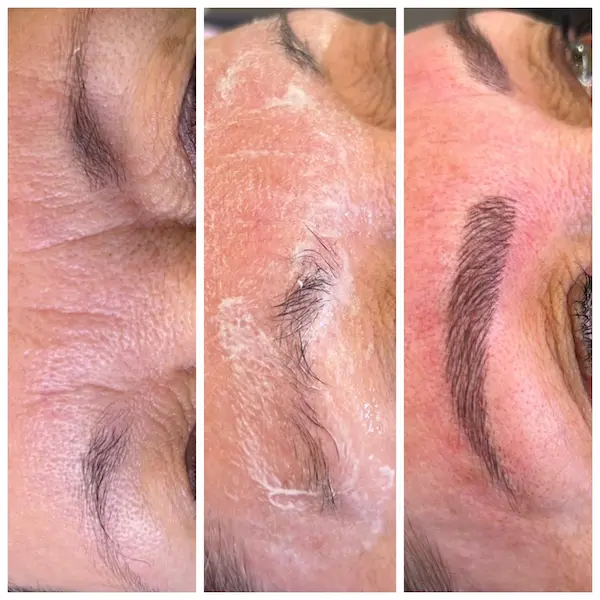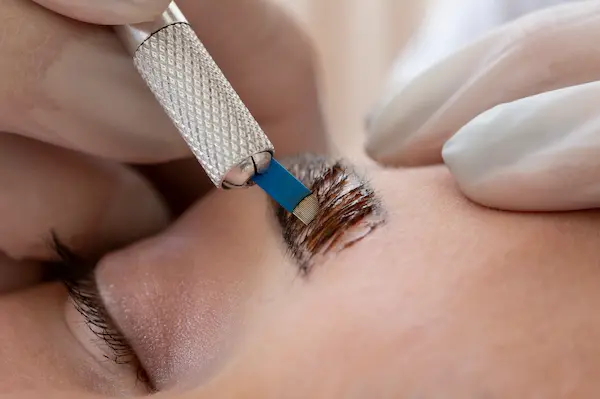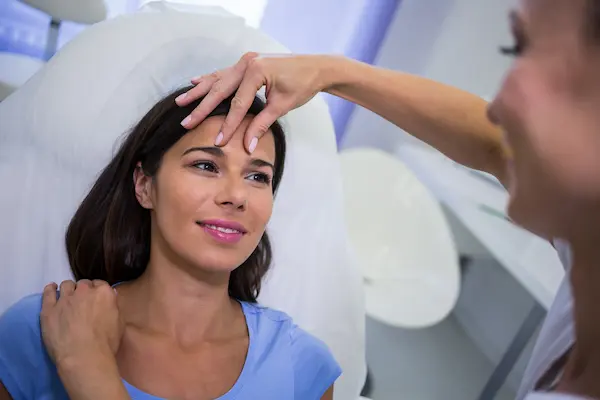You may have looked into microblading and are now concerned about how painful it might be. After all, the procedure is a type of cosmetic tattooing in which the artist cuts the skin open and inserts pigment. I can see why you're concerned. I've had my own brows powdered and microbladed a few times, so I can speak from both personal experience and the hundreds (or thousands) of customers I've interacted with over the years. Let's move on because I believe I have a good understanding.
What is Microblading?
Just to start with, for those of you who haven't read much about the microblading treatment, let's go over the most important things. You can also read more about the treatment here. Microblading is a semi permanent makeup tattooing technique to create fuller, more defined eyebrows. Microblading has gained a lot of popularity over the last few years, which is very understandable. It is a fantastic solution for individuals who have sparse eyebrows, little hair growth, or need to shape their eyebrows or fix their asymmetry. And let's not forget to mention the time savings in the morning!
One of the most common questions I get from clients when they book the appointment is whether it hurts. In this blog post, I will go over the possible pain associated with microblading and how to manage it.

Factors That Affect Pain Tolerance During Microblading
It's important to understand that everyone's pain tolerance is different. Some people may find microblading to be quite painful, while others may not feel much discomfort at all. Factors such as age, skin sensitivity, and hormonal changes can all play a role in how much pain you experience during the procedure. In our salon our experience shows that the following factors play the most important role when it comes to pain levels:
- Fibromyalgia
- Long term stress
- Not enough rest and tiredness
- PMS and Period
- Few days after an illness like influenza or even common cold
We have found that these are the variables that can most significantly affect how painful a microblading procedure is. Do not be afraid to go over everything with the artist you select because there may be more considerations.
Choosing the Right Microblading Artist
One of the most important things you can do to minimise pain during microblading is to choose a skilled and experienced artist. A good microblading artist will use high quality tools and techniques to ensure that the process is as painless as possible. Additionally, they should be able to answer any questions you have about the procedure and provide you with tips on how to manage pain. The risk with not choosing the right artist is that they cut too deep into the skin, which can cause bleeding, scarring and possible discoloration of the pigment over time.
Properly Preparing Your Skin Before Microblading
Another way to reduce pain during microblading is to properly prepare your skin beforehand. This includes avoiding alcohol and caffeine for at least 24 hours before the procedure, as well as avoiding blood thinning medications and supplements such as aspirin, ibuprofen, and fish oil. It's also important to stay hydrated and well rested before your appointment, as this can help to reduce inflammation and make the procedure more comfortable.
Topical Numbing Cream to Minimise Discomfort
During the procedure, your microblading artist will use a topical numbing cream to help minimise any discomfort. This cream is typically applied about 10 - 30 minutes before the procedure and can help to numb the area and reduce any pain or discomfort you may feel. Make sure you let the artist know if you have allergies to numbing creams or even if you have an allergy for dental anaesthetic. That could possibly affect your tolerance for the numbing cream.

Duration of Pain During and After Microblading
It's important to remember that the pain associated with microblading is usually short. While you may feel some discomfort during the procedure, it typically only lasts for about 30 minutes to an hour. After that, any discomfort should subside, and you'll be left with beautiful, natural looking eyebrows. You will feel scratching, even the noise of scratching. It can be weird and make you anxious, so your pain levels could go up. But just relax and enjoy the treatment. After the treatment, you might feel a slight burning sensation, and then when the scabbing starts falling off, you might feel itchy. This is normal, and it is very important not to scratch the eyebrow area.

Communication with Your Microblading Artist
If you do experience any pain or discomfort during the procedure, it's important to communicate with your microblading artist. They can adjust their technique or provide additional numbing cream to help make the process more comfortable. Additionally, they can provide you with tips on how to manage any discomfort you may experience after the procedure, such as itching or mild pain.
In conclusion, microblading can be a great option for anyone looking to enhance the appearance of their eyebrows. While the procedure may involve some level of discomfort, the pain is typically minimal and can be managed with the right preparation and techniques. By choosing a skilled and experienced microblading artist, properly preparing your skin, and communicating with your artist throughout the process, you can help ensure a comfortable and successful microblading experience.
Don't worry, and happy microblading!



